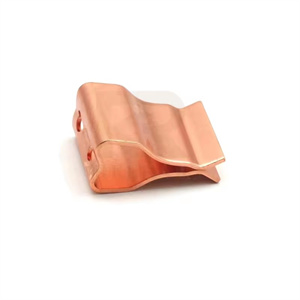There are significant differences between precision stamping and ordinary stamping in multiple aspects, mainly reflected in process flow, machining accuracy, application scenarios, product characteristics, and production efficiency.
Accuracy requirements:
Precision stamping: It can achieve extremely high precision, with dimensional tolerances usually at the micrometer level or even smaller. The shape and size of the parts have a high degree of consistency and accuracy.
Ordinary stamping: The accuracy is relatively low, the dimensional tolerance is generally large, and the precision requirements for the parts are not so strict.
Mold design and manufacturing:
Precision stamping: The design and manufacturing of molds are very complex and precise, using high-precision processing equipment and advanced mold manufacturing technology, resulting in high mold costs.
Ordinary stamping: The mold is relatively simple, with lower manufacturing difficulty and cost.
Material selection:
Precision stamping: High quality, stable performance, good ductility and plasticity materials are usually selected to ensure accuracy and quality during the stamping process.
Ordinary stamping: The requirements for materials are relatively lenient, and a wider range of materials can be used.
Equipment performance:
Precision stamping: requires high-precision, high stability, and high-performance stamping equipment that can provide precise pressure control and stroke control.
Ordinary stamping: The precision and performance requirements of the equipment are relatively low.
Firstly, from the perspective of process flow, precision stamping parts adopts a high-precision stamping processing method, which requires a more high-precision process flow. During the machining process, precision stamping machines usually use optical measurement or CNC machine tools to ensure that the product meets higher precision requirements. Ordinary stamping, on the other hand, uses conventional stamping machines for processing, which have a relatively simple process flow and lower accuracy requirements.
Secondly, in terms of machining accuracy, the total precision of precision stamped parts can usually be achieved within 0.02 millimeters, while the machining accuracy of ordinary stamping may be slightly lower, usually above 0.05 millimeters. The difference in accuracy is determined by the differences in process and equipment.
In practical applications, precision stamping parts are commonly used in the manufacturing of precision devices such as semiconductors, precision electronics, and cameras due to its high precision and quality characteristics. However, ordinary stamping is more commonly used in situations where precision requirements are not particularly high.
In terms of product features, precision stamped parts have the characteristics of thin, uniform, light, and strong. They have complex shapes, high dimensional and positional accuracy, flat and smooth punching surfaces, and quality comparable to cutting. By contrast, ordinary stamped parts may not meet such high standards in these aspects.
Finally, in terms of production efficiency, precision stamping is easy to operate, has low labor requirements, and is easy to achieve automation and mechanization. Its production efficiency is usually higher than ordinary stamping.
